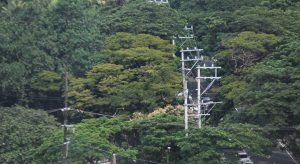THE National Electrification Administration (NEA) said it will fall short of its 2024 target to electrify 91% of all households, citing inadequate funding.
“Based on the available budget for fiscal year 2024, we will not be able to achieve 91% electrification, but we will only attain 89.36% household electrification rate,” NEA Administrator Antonio Mariano C. Almeda told a Senate budget hearing on Wednesday.
“Assuming funding is not increased, the NEA will be hard-pressed to achieve 100% electrification by 2028,” he added.
The NEA is primarily responsible for rural electrification, bringing electricity to missionary or economically unviable parts of the countryside.
The government hopes to achieve total electrification by 2028.
In the proposed 2025 budget, the NEA is seeking funding of P23.77 billion, including P19.66 billion for electrification projects.
The requested funding is intended to support energization of more than 3,000 sitios, reliability improvement projects, line enhancement of some barangays, installation of nearly 250,000 solar home systems, and rehabilitation and reconstruction of calamity-stricken distribution facilities of electric cooperatives.
Citing the evaluation of the Department of Budget and Management, Mr. Almeda said that the level of subsidy was reduced to P1.86 billion or only 9% of those proposed, which covers the energization of only 594 sitios and four barangays, while procuring 3,700 solar home systems.
“The biggest challenge in the attainment of 100% rural electrification is the inadequate government subsidy to finance the energization of the remaining unenergized areas,” Mr. Almeda said.
Meanwhile, Energy Undersecretary Rowena L. Guevara said that the department will soon be issuing the terms of reference for the upcoming green energy auctions (GEA).
GEA-3 involves geothermal, pumped storage hydro, run-of-river hydro, and impounding hydro projects with a total capacity of 4,399 megawatts (MW).
The GEA program aims to promote renewable energy as a major source of energy through competitive selection. Renewable energy developers compete for incentivized fixed power rates by offering their lowest price for a certain capacity.
“We’re going to be issuing the terms of reference soon… the performance or non-performance of projects will be included,” Ms. Guevara said.
GEA was first conducted in 2022 and attracted 1,966.93 MW worth of bids for renewables, while GEA-2 was held in 2023 and resulted in the award of 3,440.76 MW. — Sheldeen Joy Talavera
